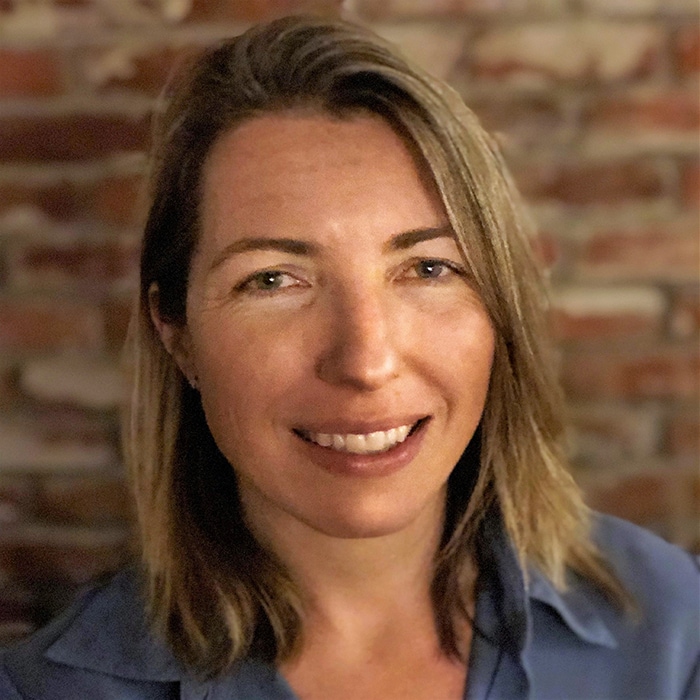Southwest Airlines Field Techs has been saved

Southwest Airlines Field Techs Fixing the problems no one else can to keep an airline flying high
07 March 2018
 John Hagel III United States
John Hagel III United States John Seely Brown (JSB) United States
John Seely Brown (JSB) United States Maggie Wooll United States
Maggie Wooll United States Andrew de Maar United States
Andrew de Maar United States
Southwest’s elite Field Tech workgroup keeps planes in the sky by fixing what no other mechanics can. How do they do it? The group uses six of the nine practices to work collaboratively—and often interdependently—to develop solutions to new and challenging problems.
SOUTHWEST Airlines (SWA), based in Dallas, operates more than 4,100 flights daily to more than 100 destinations. The nation’s largest carrier in terms of originating domestic passengers boarded, SWA prides itself on quick turns at the gate from the time of arrival to time of departure. The Field Techs, an elite group of technicians, take on the toughest mechanical challenges, fixing aircraft and getting them back in the air to keep more flights, and customers, on schedule.1
Essential to Southwest’s overall success is its nerve center, the Network Operations Control (NOC). It’s home to two workgroups whose methods and behind-the-scenes innovations seem to have greatly improved the experience of those who fly Southwest—and given a sustained boost to the airline’s performance. As a complement to the Baker workgroup, which aims to improve decision-making around unanticipated operational and weather-related events, the Field Tech workgroup is a specialized unit of aircraft mechanics. Members try to fix what no one else can—and manage to keep nearly the entire Southwest fleet ready for takeoff at all times.

The workgroup: Field Techs
The workgroup is tasked with identifying and resolving mechanical, electrical, and other issues that no other maintenance unit can fix, including problems no one can recall seeing before. The Field Techs repair planes after mechanics in maintenance units have failed to fix them after three attempts.
- Size: The Field Tech workgroup comprises 14 employees working at 10 airports, or nodes, in Southwest’s network.
- Sustained involvement: Field Techs are assigned to the workgroup full time. They spend their days fixing issues on aircraft and leveraging the resources of local maintenance crews, as well as working with other Field Techs to help troubleshoot and resolve issues on planes at other sites.
- Integrated effort: Although its members are geographically distributed and there may be only one Field Tech physically with any given plane, they are often in contact with each other throughout the day. Around 25 percent of the aircraft the workgroup touches each day require the Field Techs to work collaboratively, and often interdependently, to develop solutions to new and challenging problems. Much of this is done using audio and video chat, as well as logs, allowing members to build upon each other’s skills, insights, and ideas to get planes back in service.
Learn More
Explore the practices and case studies
Read an overview of the opportunity
Download the full report or create a custom PDF
Think about this: Every single issue the Field Tech workgroup faces is an exception to the rule. Its success in resolving such issues, and preventing their recurrence, is key to getting disabled aircraft back into service as quickly and safely as possible. Thanks in part to members’ distribution across time zones, the workgroup operates 24/7. In an eight-hour shift, a single technician might work on 12 different planes, both at his node and remotely.
While Southwest’s fleet consists of only one type of aircraft, the Boeing 737, each jet has its quirks. A plane’s personality is determined by factors including age, the environments in which it’s flown (harsh winters in Chicago, scorching heat in Phoenix), and how particular pilots fly it (former military pilots prefer to take off at higher speeds). Like a doctor who knows her patients, a Field Tech knows his planes. Even Boeing will occasionally tap the workgroup’s expertise when facing an unfamiliar problem with a 737, knowing the breadth and depth of members’ experience.
Every day, the Field Techs show up to work with a clear sense of purpose: fixing the seemingly unfixable, and keeping the fleet ready for takeoff. “I won’t say there’s nothing that we can’t solve,” says Field Tech John Strickland, “but we’ve got a pretty good shot that we’ll be able to fix it. Knock on wood: We’ve never flown a plane into somewhere we haven’t been able to get it out.”
The results: Increased aircraft uptime
The drive for continuous improvement is part of Southwest’s culture. The Field Tech workgroup members are doing better over time; they know it because they track key metrics, including the number of aircraft out of service for unscheduled maintenance and the fleet’s daily on-time performance. These metrics give the Field Techs a genuine picture of the fleet’s status and allow the workgroup to direct resources appropriately.
If a plane has three recurring defects in 15 days, its status is changed to “on alert.” Too many aircraft on alert hampers Southwest’s ability to operate its network at full capacity.


Field Tech’s goal is to keep under 7 percent of the Southwest fleet on alert. Over the past decade, the workgroup has reduced that number from 8 percent to just over 3 percent (see figure 1). And it wasn’t a result of adding more people—during that span of time, the number of defects each technician encountered also went down. This suggests that technicians are becoming steadily more effective at fixing issues, ensuring they don’t reoccur, and reducing the overall defect rate by addressing issues proactively.
Practices in play
Southwest’s Field Tech workgroup uses six intersecting practices: Commit to a shared outcome, Frame a powerful question, Prioritize performance, Maximize the potential for friction, Eliminate unproductive friction, and Seek new contexts.
Commit to a shared outcome
The Field Tech workgroup is committed to keeping the airline’s fleet operational, with a goal of “nearly 100 percent.” Their commitment is palpable, embodied in friendly competition over who can fix the planes that are hardest to fix. Across the workgroup, each Field Tech appears to welcome the opportunity to get his hands on a plane that has stumped one of his colleagues. All the while, they’re focused on the larger outcome—getting Southwest’s planes back in the air.
Their commitment also seems evident in the way members work collectively via audio and video chat to resolve issues across the network. It is common for technicians from other nodes to pitch in. Explains supervisor Brandon Beard, “It’s a high-stakes role where everyone expects the best from you.”
Over time, workgroup members have learned to play to each other’s strengths, creating an environment in which each can give his best in service of a shared outcome, and finding opportunities for others to succeed. For example, when members saw that a technician in Chicago enjoyed working on pneumatic problems, they sent him planes with such problems.
Frame a powerful question
In the quest to be better than the day before, the Field Tech workgroup tends to ask questions in search of answers that might give members an edge in keeping more planes operational.
Southwest keeps a running list of its major causes of alerts, unscheduled aircraft maintenance, and downtime. The Field Techs took a hard look at the list and asked: What if we could take the number-one issue here and push it out of the top 10? It was a bold question. This particular maintenance issue had sat atop the leaderboard for years, with no one figuring out a way to prevent or proactively identify it. It had become accepted as a cost of doing business, accounting for millions of dollars in lost revenue every year.
The Field Tech workgroup rallied around this question. “We wanted to do it, even though no one outside the group thought it could be done,” Beard says, “because of the huge potential for impact.” The workgroup seems to thrive on taking things to the next level. With this goal in their sights, the Field Techs put their collective experience to solving the issue. The question crystallized their goal and set into motion a series of initiatives that prioritized performance toward that goal.
Prioritize performance trajectory
Even as the Field Tech workgroup agreed to focus on pushing the number-one delay driver off the top-ten list, members remained committed to keeping Southwest’s fleet nearly 100 percent operational. To do so, the group had to focus on events across two time horizons, tracking immediate delay indicators while observing long-term trajectory, tuning efforts on both scales simultaneously.
To succeed in these goals, the workgroup first had to figure out what data to track that could be a relevant indicator of the problem. They had a lot of data to work within the aircraft health monitoring system, but no single metric had proven to be a reliable leading indicator of this type of failure. They had to take all of the raw data points, each meaningless on its own, and combine them in different ways until they could see what was different when the failure occurred. Once they identified these exceptions to the norm, they could build a flag around it to trigger an alert. The flags in Southwest’s aircraft health monitoring system alert line mechanics to pull a plane for maintenance before an issue occurs (and before passengers board). With the flag in place, the number-one delay driver occurred less and less often—and gave up its chart-topping position. Still, Field Tech continued to refine its system, creating new flags and revising existing ones while watching the impact on the delay list. In the end, members identified 14 flags for all of the components that contributed to that issue.
Ultimately, the Field Tech workgroup didn’t just accomplish something no one thought was possible—it changed the nature of aircraft maintenance at Southwest. The new approach created annual savings estimated at $3.2 million by eliminating thousands of hours of unscheduled maintenance and repairs.2 Reducing unexpected maintenance and repairs can create real value for passengers, crew, and operations staff as well.
Now the workgroup has turned its focus to the new number-one delay driver, with a goal of driving that out of the top 10 as well.
The Field Tech group also pays attention to individuals’ performance trajectories. Part of reducing delay drivers requires enabling the maintenance crews to address issues before aircraft go on alert. The members can’t be successful without the help of line maintenance mechanics at the airport. The group’s “Teach me, watch me, watch me teach someone else” approach takes a long-term view, placing group (and maintenance crew) capabilities and effectiveness over the short-term efficiency of just getting a task done. As members pick up new skills, they share those capabilities and lessons learned with other members and, in parallel, the line maintenance crews. After that, line maintenance personnel are given as many opportunities as possible to develop and show hands-on mastery, with a more experienced Field Tech group member watching over them.
Eventually, the crew members are expected to teach others recently learned skills. In each of these types of learning encounters, the Field Tech group members involved are comparing notes, sharing observations, and possibly tinkering with how the task is completed or the problem is solved. This accelerates the workgroup’s learning even as the regular opportunities to teach each other, and the line maintenance crews themselves, also accelerate individual Field Tech members’ learning. Members value what they see as an opportunity to learn and gain experience faster: “Working as a Field Tech for two years can produce an experience level that it might take 10 years to attain otherwise,” Beard says.
Maximize the potential for friction
Field Techs work at the edge of what’s possible. “Many of the problems we see are not in the manual. We often have to think outside the box to help resolve the issue,” says member Mike Perna. “We fix the unfixable.” But it’s exactly such “unfixable issues” that make up the group’s everyday workload. And the issues it faces are so varied that members consider it important for the group to include mechanics with a wide variety of expertise, experience, and approaches.
The workgroup doesn’t look for technicians who fit a set mold or profile—quite the opposite. Laughs Beard, “If you had a cookie cutter, it certainly wouldn’t apply.” No two technicians are the same: Workgroup members vary in working styles, personality, professional background (some are former military; others have worked for other airlines in varying capacities), and more. So what do they look for? Hard work, creativity, stubbornness. A love of challenges. A commitment to getting the job done, by any means necessary. And, Beard says, the mechanics who thrive in the group are those “who get frustrated when they can’t do as good a job as they’d like to because they don’t have this or that tool—one perk of being a part of Field Tech is access to whatever tools you need.”
Hiring for fit within the workgroup, and Southwest’s culture in general, is an important part of how the workgroup keeps unproductive friction to a minimum. In addition to staffing for passion and growth mind-set, Field Tech looks for existing employees known by their peers as people who can get it done no matter how challenging or complex the issue—those with a real passion for fixing airplanes, who also embraced a team-first mentality. In short, members have tried to create a rock-star workgroup versus a group of all-stars. Explains Beard, “You can give someone the technical skills, but you can’t make them a good person, or someone hungry to take things to the next level. We’re looking for someone with a fire inside them, pushing to be better every day.”
Given the breadth of personality and diverse experience across the group, members aren’t strangers to occasional friction, especially given the pressure under which they often work. However, at the end of the day, shared goals and a focus on outcomes mean that everyone should be aligned around bringing aircraft back into service.
Eliminate unproductive friction
Not only is each technician unique, so is each node; the workplace culture at each reflects the culture of its region. The workgroup has found that the fit between a Field Tech’s personal style and the culture at the airport is a crucial element in avoiding unproductive friction. A lot of thought is given to matching group member and location. “There’s no one set way of operating,” Beard says. “Every region is a little bit different. The same Field Tech who’s highly effective in Baltimore might not be as effective in Phoenix.”
Here’s where airport culture comes into play: Some airports are very hierarchical, with line mechanics serving strictly executional roles. At such nodes, Field Techs need to carefully structure tasks assigned to line mechanics. At other airports, where line mechanics are encouraged to be proactive and solve problems as they see fit, tasks don’t need to be spelled out. Workgroup members appreciate and value different styles of leadership from different individuals and nodes; they don’t see one style as necessarily better than the other, just different.
Regardless of the location, the Field Tech group tends to hire new members from within—not just within Southwest but within the line maintenance crew at a specific airport. (A mechanic from Chicago, for example, would be unlikely to be moved to Dallas.) In the world of aircraft maintenance, relationships are paramount; you have to trust the person working next to you. Field Tech tends to promote people who have built up trusted relationships at a given airport.
Going from line mechanic to Field Tech is also a major promotion with a monumental increase in responsibilities, so how the workgroup and the airline support new members is important. “A maintenance tech is responsible for only what he does—no more, no less—but a Field Tech is responsible for themselves and everyone else,” Beard says. He believes that if the workgroup supports any new member correctly, “we could make you a leader, so long as you had the technical chops and the right work ethic and the respect of your peers.”
The “Teach me, watch me, watch me teach someone else” approach members use to teach skills and spread tacit knowledge seems to create an environment for building trust and embracing humility and vulnerability, one hands-on experience at a time. For example, when a veteran member walks a new co-worker through a “flap lockout” situation in which a plane is grounded, the two work side by side in an intense effort to troubleshoot 25 parts and get them working in unison again. Working directly on an aircraft, with a specific and shared goal of fixing the problem, focuses the members on what is important and downplays any unproductive interpersonal conflict. By the time the two emerge, having fixed the underlying flap asymmetry, the shared experience of working together (as a we, not a me) to get a plane back in service can create a deeper relationship and trust between them.
In addition, the workgroup often hires technicians in pairs—perhaps a main hire and a trusted partner who can fill out the necessary skill sets and already knows what makes the other tick. This practice can help avoid tensions by ensuring the workgroup is bringing on established trust-based relationships along with specific skills. At the same time, they look for duos and trios that are willing to challenge each other, often having such a deep trust in their working relationship that they can have friction around the work and push each other to better answers and improved techniques.
Just as important as the composition of the workgroup as a whole can be creating an environment where members are willing to be open and honest about issues with which they are struggling. In looking for yet more ways to reduce the top delay driver, workgroup leaders observed a striking pattern: Members often painted a rosy picture of the situation at their home airports, no matter how understaffed or overworked they actually were. It turned out they feared that highlighting operational underperformance would be seen as a sign of weakness, negatively affecting personal performance reviews.
The resulting lack of transparency had effects beyond anything personal. More seriously, it prevented the workgroup from identifying technicians and nodes that needed help—and from prioritizing the right set of resources to make a difference. Realizing this, the Field Techs consciously shifted their focus from efficiency to learning, putting both vulnerability and humility at the forefront. The workgroup’s leaders sought out those who had put up great numbers—but only through Herculean daily effort. They set a new tone, letting group members know they wouldn’t be penalized for having a “bad” scorecard. In fact, transparency would be rewarded, as it would ensure that the right resources went to the right areas.
Seek new contexts
To help them be more effective, Field Techs are encouraged to go out and learn from experts across the field of avionics—and beyond. So long as the course or training seems likely to make the technician a more well-rounded professional, Southwest generally encourages him to pursue it. For example, if a Field Tech wants to take a class on the effects of aircraft hydraulics on aerodynamics, it’s typically approved—no questions asked. “We’ll let them go where their passion and energy take them, rather than manage their time,” Beard explains.
Field Techs are also encouraged to attend trainings in other industries. For example, Southwest’s new fleet of planes will incorporate fiber-optic technology. Technicians will have to solve related issues—and even before that time, they’re proactively learning from the established experts in fiber optics, attending some of the same classes to which a leading telecommunications company sends its technicians and learning from them about how they use the technology and challenges they encounter.
The workgroup extends cross-industry curiosity further, continuously seeking out and adapting tools from other industries. For example, technicians have taken the thermal imaging cameras used in firefighting and adapted them for use in aircraft maintenance. Where testing a temperature sensor on a plane once required wrapping every duct in tape, firing up the engines, and checking each duct for melted tape, technicians can now spot bad seals simply by looking at heat signatures as they walk around a plane.





